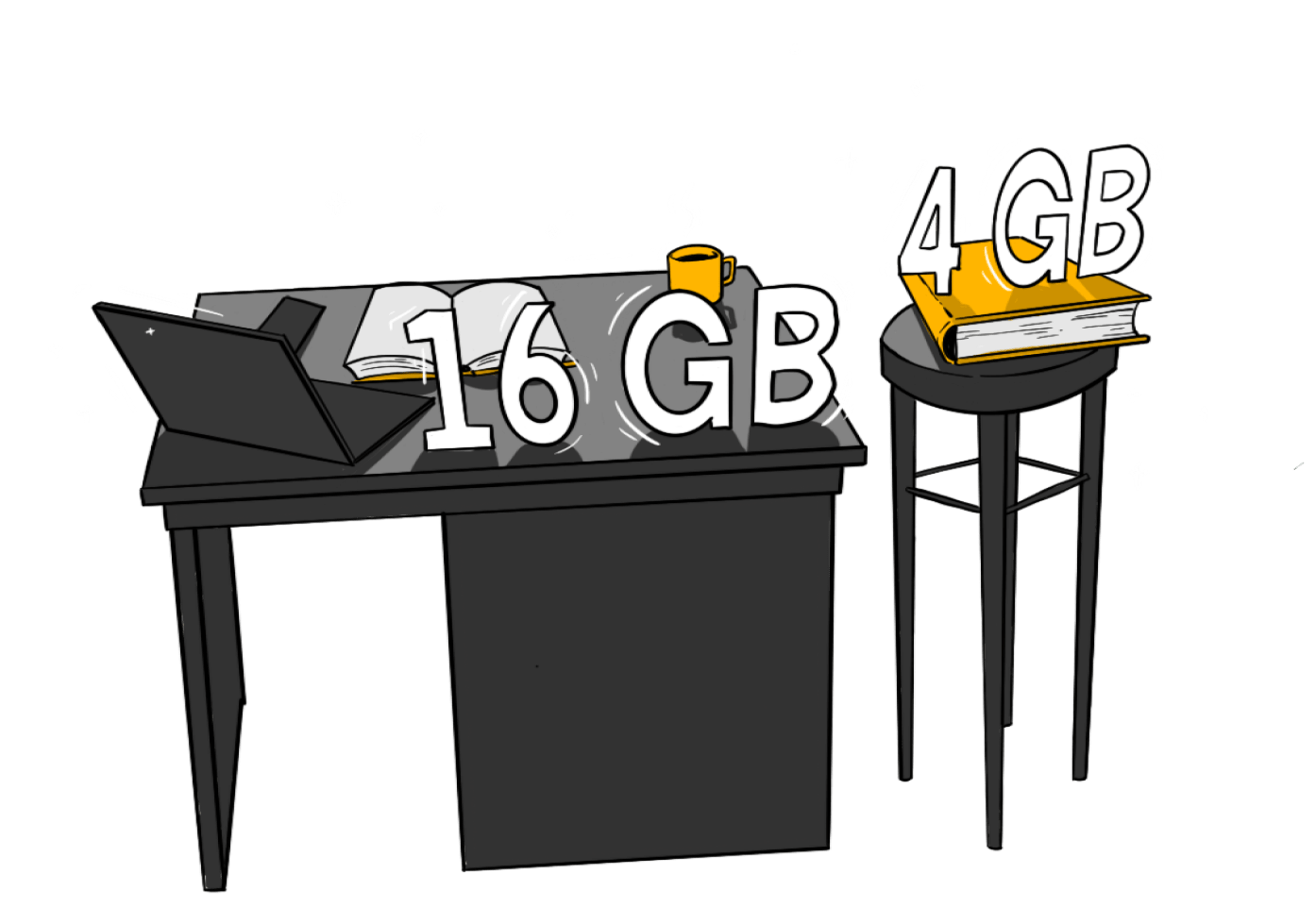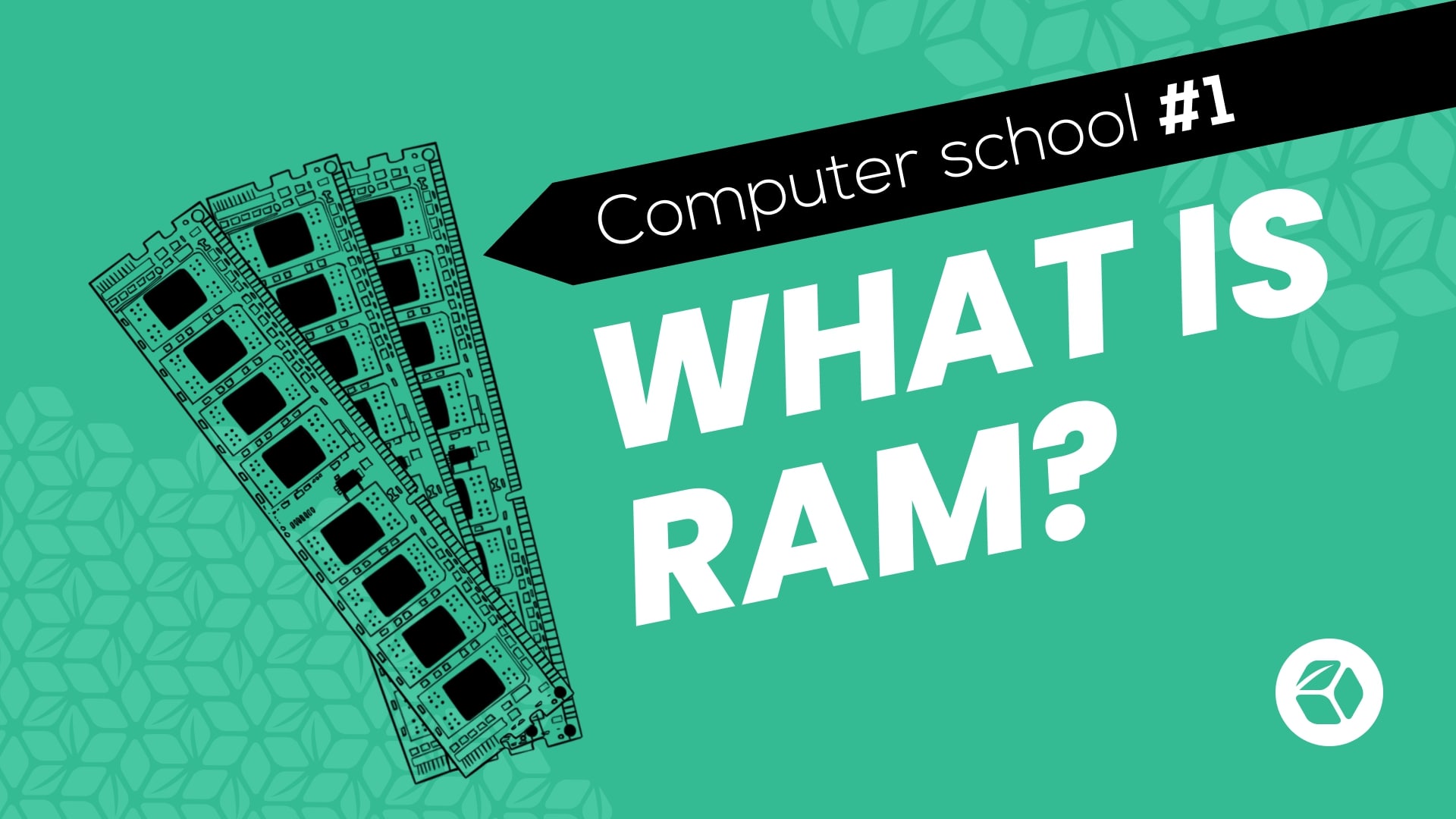What is RAM?
Short answer – random access memory, or operational memory. 😀
RAM is a very used term when evaluating the speed and power of computers, but often people who are not familiar with technology do not know more about it than that a bigger number is better.
This is not wrong, but it would be more important to understand it better in order to more correctly assess your needs when purchasing a computer.
So what is RAM?
Let’s demonstrate. Imagine you have two tables, one 4x bigger than the other. On a larger table, you can fit significantly more things at the same time, with which you can also work in parallel, than on a smaller table, where maybe only one thing can fit.

The principle of RAM is the same – the more RAM, the more applications, software, web browser tabs, etc. can run simultaneously.
It is also important to understand that the operating system (eg Windows, macOS) already uses a lot of desktop space to keep itself running. For example, in Windows 11 requirements it is already written that 4GB of RAM is the minimum to keep the operating system running.
For Windows XP it was, for example, 64MB, or 62.5 times less. The need for RAM increases year by year, and therefore it would be important to consider when buying a new device that in 5 years the need for RAM will probably be greater than today.
One of the cornerstones of the GreenDice tech circle is devices that last at least 10 years, because of that it is important to us that we can add additional RAM if necessary.
How much RAM should there be?
Today, 8GB is mostly enough to fulfill the minimum needs, i.e. browsing the Internet. But in this case, the computer should definitely have the support to add more RAM.
Our recommended minimum amount of RAM is 16GB, which also enables working with more professional software.

